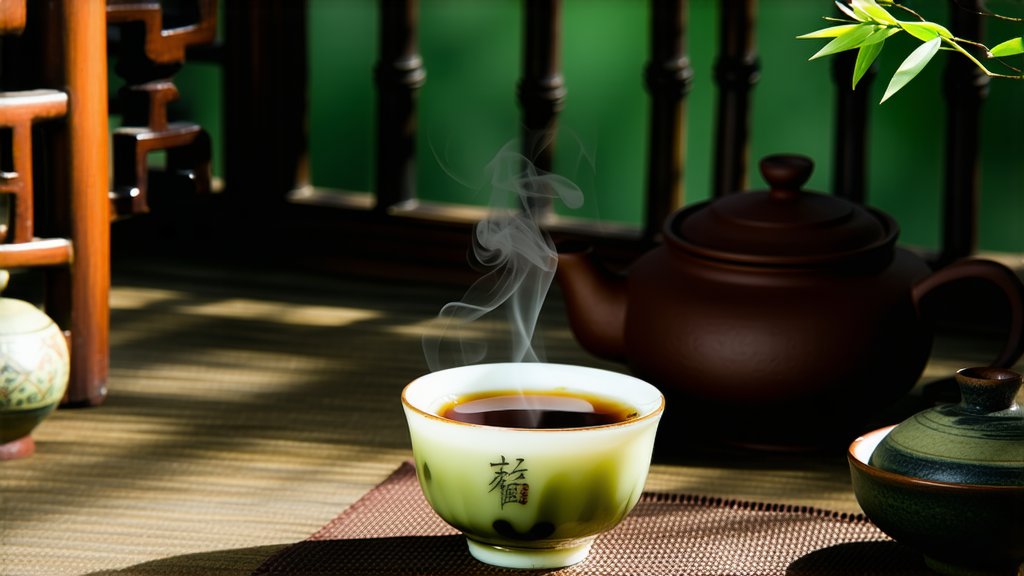
Pu-erh tea, a dark gem in the crown of Chinese tea culture, stands as a testament to the country's rich tea heritage and innovative spirit. This unique category of post-fermented tea has garnered international acclaim for its complex flavors, health benefits, and intriguing production process. In this exploration, we delve into the depths of Pu-erh tea, unraveling its historical roots, diverse varieties, meticulous craftsmanship, and the art of its appreciation.
A Glimpse into History
The tale of Pu-erh tea begins in the mist-shrouded mountains of Yunnan Province, China, where tea cultivation dates back over a thousand years. The name "Pu-erh" is derived from the ancient town of Pu'er, which served as a vital trading hub on the Tea Horse Road—a historic route linking China's tea-producing regions with Tibet and beyond. It was along this road that Pu-erh tea first gained prominence, becoming a prized commodity for its ability to withstand long journeys without spoilage due to its unique fermentation process.
Varieties: A Spectrum of Flavors
Pu-erh tea is broadly categorized into two main types based on processing methods: Raw (Sheng) Pu-erh and Ripe (Shou) Pu-erh. Both varieties undergo a fascinating transformation over time, developing distinct characteristics cherished by tea connoisseurs worldwide.
-
Raw (Sheng) Pu-erh: This type is made from sun-dried green tea leaves that are then compressed into cakes, bricks, or other shapes without further processing. Over decades, Raw Pu-erh undergoes natural microbial fermentation, gradually maturing and evolving in flavor profile. Young Sheng teas are known for their vibrant, astringent taste with hints of sweetness and floral notes, while aged ones mellow into deep, earthy, and woody undertones with a silky texture.
-
Ripe (Shou) Pu-erh: Ripe Pu-erh, also known as 'cooked' or 'wo dui' Pu-erh, accelerates the aging process through a controlled fermentation environment called 'wet piling' or 'wo dui'. Fresh leaves are piled together and left to ferment under humid conditions for several weeks, promoting rapid microbial activity. This results in a tea that achieves a mature flavor profile much sooner than its raw counterpart. Ripe Pu-erh typically boasts a smooth, mellow taste with rich earthy and woody notes, often accompanied by subtle hints of caramel or chocolate.
The Art of Craftsmanship
The making of Pu-erh tea is an intricate dance between man and nature, requiring skillful hands and a deep understanding of the tea plant. Here’s a glimpse into the traditional工艺流程:
-
Harvesting: Only the top two leaves and bud are picked during specific seasons to ensure optimal quality.
-
Withering: Freshly harvested leaves are spread out to wilt under sunlight, reducing moisture content and preparing them for subsequent steps.
-
Fixation: The withered leaves undergo a brief heat treatment (usually pan-frying or roasting) to halt oxidation and fix their aroma.
-
Rolling and Shaping: Leaves are rolled into tight spirals or twisted into various shapes before being compressed into cakes or bricks using stone molds.
-
Fermentation: For Raw Pu-erh, this occurs naturally over years as the tea ages in storage. Ripe Pu-erh undergoes accelerated fermentation through the 'wet piling' process mentioned earlier.
-
Drying and Packaging: Once fermentation is complete, the tea is dried thoroughly and wrapped in traditional packaging materials like hemp cloth or bamboo leaves to preserve its integrity.
Savoring the Essence of Pu-erh
To truly appreciate Pu-erh tea, one must engage all senses in a mindful ritual. Here’s a guide to savoring this enigmatic brew:
-
Preparation: Use a Yixing clay teapot or a Gaiwan (a lidded bowl) for best results. Rinse the vessel with boiling water to warm it up.
-
Breaking Apart: If using a compressed cake or brick, gently tap or pry off a small piece with a tea pick or needle.
-
Infusion: Boil fresh water and let it cool slightly to around 95°C (203°F). Steep the tea for about 5-10 seconds for the first infusion, then gradually increase steeping time for subsequent brews.
-
Observation: Note the color transformation of the liquor from light amber to deep reddish-brown as it ages.
-
Aroma: Inhale the evolving scents—fresh hay, damp earth, aged wood, and subtle fruitiness.
-
Tasting: Sip slowly, allowing the tea to coat your palate. Pay attention to its body, astringency, sweetness, and aftertaste. Each infusion reveals new layers of complexity.
-
Appreciation: Take time to reflect on the tea's journey from leaf to cup, appreciating not just its flavors but also the cultural and historical context that surrounds it.
In conclusion, Pu-erh tea is more than just a beverage; it embodies centuries of tradition, artistry, and the harmonious relationship between humans and nature. Whether you're drawn to the youthful vigor of Raw Pu-erh or the mature wisdom of Ripe Pu-erh, exploring this world will undoubtedly enrich your understanding of and appreciation for one of the most fascinating chapters in the story of tea.